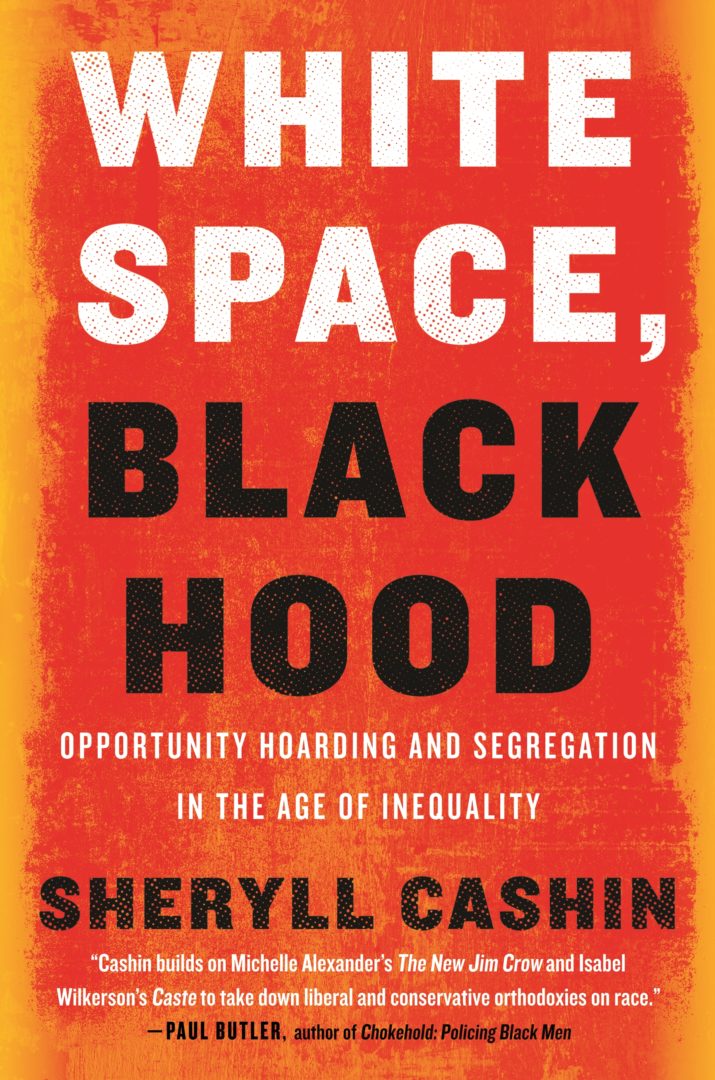
On April 21, BRHP hosted law professor and author, Sheryll Cashin, to discuss her book White Space, Black Hood, and approach to addressing the legacy of redlining and hypersegregation across the country. We hosted this conversation in April during National Fair Housing Month to shift the narrative around poor Black neighborhoods and recommit ourselves to the movement for housing justice. As you may recall, BRHP hosted Dr. Lawrence Brown for a similar conversation in February 2021. As housing mobility leaders and fair housing advocates, we welcome the opportunity to continue the conversation and calls for action to address the injustices our communities face. Our conversation with Professor Cashin highlighted a frustrating history and pattern, but also encouraged us to think about solutions.
Professor Cashin’s call to action: abolition and repair of harmful systems. As a graduating political science student at Morgan State University, learning history is essential to dismantling oppressive policies and practices, and to creating new ones that drive progression and opportunity for all members of community. Professor Cashin kicked off the discussion with a presentation highlighting her more than two decades of research on the processes of residential caste with a particular focus on our home city of Baltimore. Professor Cashin broke down the ways racist policies have created and continue to create high poverty “Black hoods” and high opportunity white spaces. She also outlined steps to abolish the harm processes and repair communities.
Here are my takeaways from the conversation:
1. Progress has always been met with opposition
I learned that throughout history as subordinating Black institutions were removed, new subordinating Black institutions replaced them. Professor Cashin traced the institutions of slavery, Jim Crow, and the ghetto to explain her point. She argues that “hoods” have been created and maintained through policy actions, law, and stereotypes (ex. thugs, ghetto) to justify subordination of groups of people. States overinvest and exclude in affluent white spaces and disinvest, prey upon, and contain in high poverty Black spaces. Professor Cashin outlined three processes of residential caste – boundary maintenance (ex. exclusionary housing, urban renewal displacement), opportunity hoarding (ex. overinvestment and disinvestment of services, public goods, and infrastructure), and surveillance (ex. “War on Drugs”) – and provided recent examples of each with a focus on the cancellation of the Red Line Project, which would have provided a great economic benefit to lower income Baltimoreans.
2. Baltimore is a case study for residential caste in America
During the antebellum era, Baltimore had the largest free Black population among slave-holding states. As late as the 1890s, Black people could live wherever they could buy a house, as there wasn’t a Jim Crow caste at the time. Professor Cashin focuses on Baltimore in the first chapter of her book, using it as a case study for residential caste because of these early progressive beginnings. She argues that Baltimore is the birthplace of this type of neighborhood inequality. During our conversation she referenced two prominent Baltimore legal leaders – W. Ashbie Hawkins and George W.F. McMechen – who were early resisters of inequality in the city. We also reviewed the history of hypersegregation in Baltimore through different planning maps, providing a visual for the city’s evolution to a residential caste system.
3. There is hope for the future
I was inspired to learn that there are solutions to the issues of our cities, and it is as simple as reversing harmful processes. Professor Cashin proposed many strategies, including inclusionary zoning, racial equity investment, and humanization and care. She stresses that historically disadvantaged neighborhoods should be prioritized in investment decisions. One strategy towards humanization that she proposed using was Peacemaker Fellowships to help reduce crime by helping offenders become assets in their community through intentional investment. Professor Cashin also referenced strategies like BRHP’s Baltimore Housing Mobility Program in relocating community members from high-risk communities. Additional strategies included civic mobilization efforts to energize community members that typically would not vote and creating multiracial coalitions in advocacy efforts. In Professor Cashin’s January 2022 op-ed in Politico she highlights the importance of multiracial coalitions working together to dismantle unjust systems.
Since our conversation with Professor Cashin, I feel more confident that there are long-term solutions to end the trauma and exploitation of Black communities. Professor Cashin is bold in her calls to action, and I am encouraged that many of these calls have already been proven to work in other cities. I am inspired to unite with like-minded individuals to be a part of the solution of repairing and rebuilding our communities.
Watch the replay of our event below and let us know what you think.
You can purchase White Space, Black Hood at https://www.penguinrandomhouse.com/books/609000/white-space-black-hood-by-sheryll-cashin/.
Jocelyn Daniels is BRHP’s Communications and Special Projects Intern and a graduating senior, studying political science, at Morgan State University.